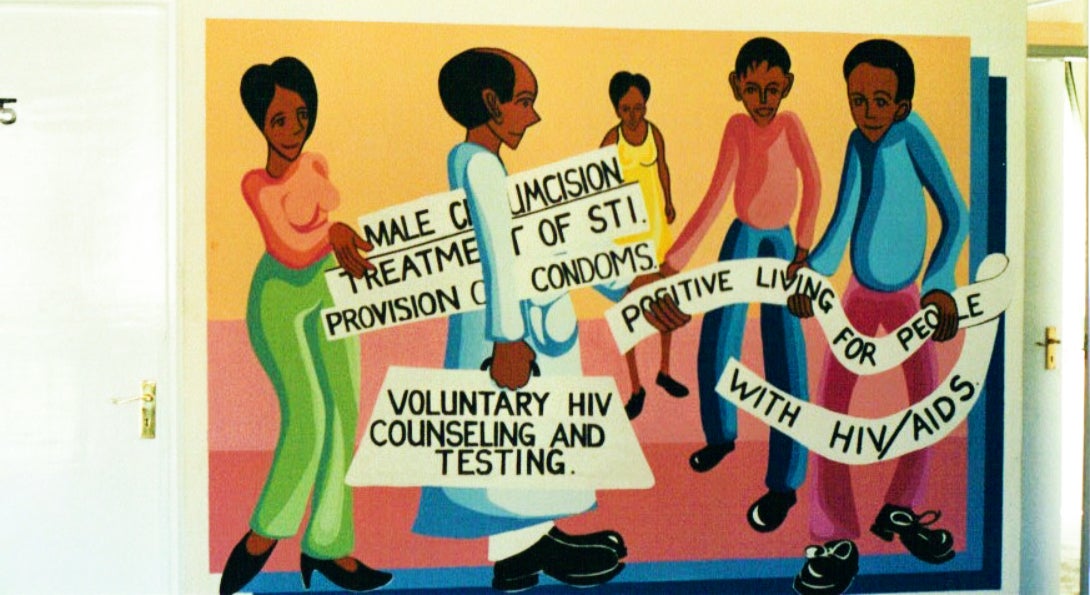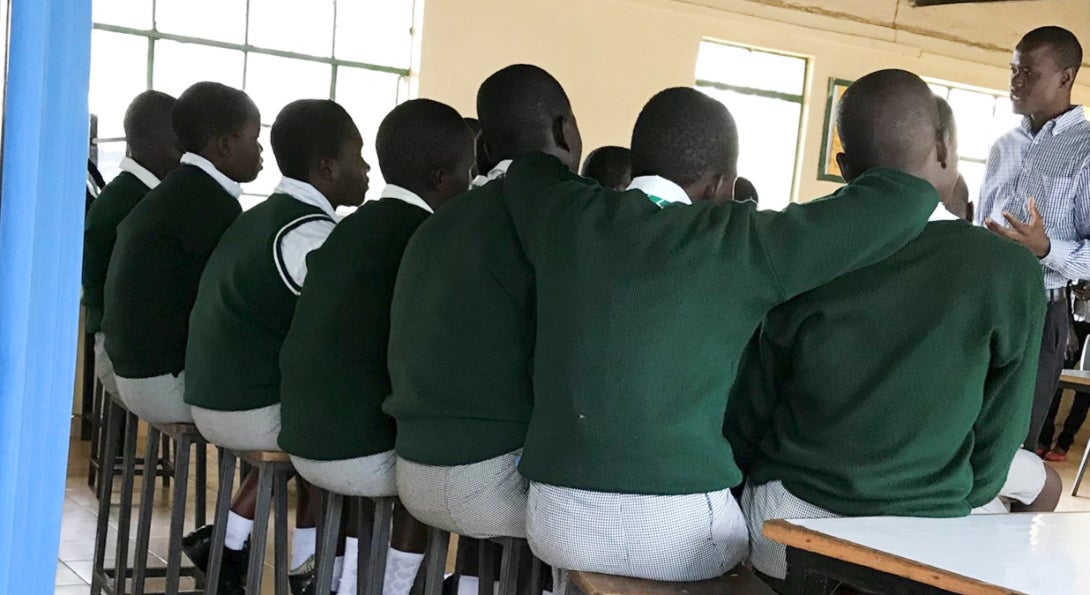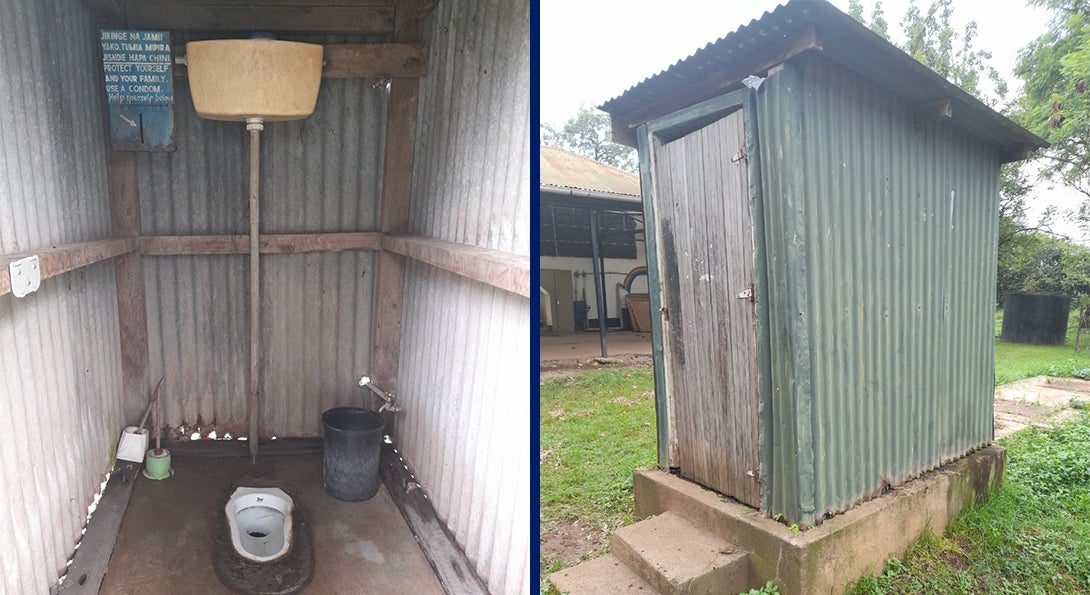Research Projects in Kenya
Innovations in HIV prevention and treatment Heading link

HIV remains a global pandemic, with 37 million infected. An excess of new infections occur in sub-Saharan Africa. Hearteningly, it is estimated that the scale-up of voluntary medical male circumcision (VMMC) has averted 2 million HIV infections and 300,000 deaths since the results of three randomized controlled trials in sub-Saharan Africa proved the efficacy of VMMC in reducing HIV transmission in 2006.
One of those trials, in Kisumu, Kenya, was led by Robert Bailey, PhD, professor emeritus of epidemiology. With support from the National Institutes of Health (NIH), Bailey conducted the trial from 2002-2006, demonstrating a 60 percent reduction in HIV incidence among men undergoing VMMC, with post-trial surveillance showing efficacy maintained through at least 6 years.
From 2010-2015, Bailey led country-wide scale-up with support from the Bill & Melinda Gates Foundation and Centers for Disease Control and Prevention. Throughout that time, Bailey’s program in Kenya supported and graduated 5 MS and 7 PhD students. Results of this research have global reach, informing several of the World Health Organization guidelines for VMMC practice and scale up.
Over the years, 30 MPH students have completed their global health practicum through our Kenya program. Importantly, Bailey’s research in Kenya has provided a platform for other SPH faculty to conduct research successfully in Kenya.
Experiences of violence among adolescent girls in rural Kenya Heading link
Violence against women is endemic across much of Sub-Saharan Africa. In Kenya, 47 percent of women aged 15-49 have experienced physical or sexual violence in their lives, with most violence among ever-married women occurring at the hands of a current or former partner. Among adolescent girls 15-19 years, 35 percent report having experienced physical or sexual violence. Physical and sexual violence that occurs in during youth is associated with a wide variety of adverse outcomes, including increased HIV/AIDS risks, physical harm, and decreased psychosocial wellbeing and educational attainment. Moreover, these harms and risks increase as the number or severity of violence increases.
Led by Alisa Velonis, PhD, assistant professor of maternal and child health, this study aims to characterize of types of violence and examine whether violence and/or forced sex is associated with educational or mental health outcomes, in particular school absence and quality of life.
Sparking new interventions: microbiome research and sexual and reproductive health Heading link

After serving as a co-investigator to the VMMC trial, SPH’s Supriya Mehta, PhD, interim associate dean of global health, was awarded NIH funding to study microbiome-related HIV and sexually transmitted infection risk in Kenya. Focusing on the microbiome (bacterial community) as a central driver of women’s risk of sexually transmitted infections, Mehta and colleagues from UIC collaborated with peers in Kenya to demonstrate that the male partner’s penile microbiome composition accurately predicts a woman’s risk of vagina infection up to one year later. These results have been featured in numerous news outlets, including CNN, Newsweek and Fox News, reflecting the importance of the study to the public.
New approaches to effective treatment are needed; modifying the penile and vaginal microbiome may be one such approach. Building on this work, Mehta is evaluating the effect of menstrual cups on the vaginal microbiome and subsequent risk of HIV and sexually transmitted infections in adolescent schoolgirls in rural Kenya. Menstrual hygiene management (MHM) is a pervasive problem across low- and middle-income countries, and a lack of MHM materials negatively impacts girls’ school life and increases vulnerability to coercive sex. In addition to being a long lasting solution to MHM, menstrual cups may protect the vaginal microbiome by preventing use of unhygienic alternatives.
Solar-powered household water treatment to improve health Heading link
At the intersection of sanitation and clean water Heading link

People may choose fields, bushes or other open space for defecation if they do not have a toilet readily accessible. Open defecation causes diarrheal disease in children, which leads to malnutrition and increased mortality. As communities shift to ‘open defecation free (ODF)’ and construction of toilets, related diarrheal disease should decrease.
Courtney Babb, MS in Epidemiology ’15, partnered with the Ministry of Health in Nyando District, Kenya, to evaluate latrine intervention conditions in relation to diarrheal disease. Babb and community health workers visited individual households across 33 villages to take water samples for testing and assess latrine conditions. Unexpectedly, children in households without ODF zones had the same rate of diarrhea as children in ODF areas. Babb demonstrated that this was due to greater availability of safer water in the non-ODF areas compared to the ODF areas.
Shockingly, the prevalence of unsafe water by sub-location ranged from 43 percent to 87.5 percent by World Health Organization (WHO) classification of coliform bacteria and other water quality indicators. According to WHO, by 2025, half of the world’s population will be living in water-stressed areas.

Assisting tobacco farmers in finding viable economic alternatives Heading link
More than eight million people die each year from tobacco-related illnesses. With changing markets, more than 80 percent of the disease burden from tobacco use will fall on low to middle-income countries (LMICs) by 2030. Driving this shift, opponents of tobacco control have argued that tobacco control measures harm smallholder farmers in LMICs; as a result, many governments have been slow to adopt these policies.
Funded by the NIH and the Canadian Institute of Health Research, Jeff Drope, PhD, research professor in health policy and administration, and his colleagues are rigorously examining the economic lives of these farmers in six major tobacco-growing LMICs—Indonesia, Kenya, Malawi, Mozambique, Zambia and Zimbabwe. The project aims to illuminate the broader structures, policies and other important contexts that frame farmers’ livelihoods. Their findings show unequivocally that the tobacco industry’s narrative of farmer prosperity is mostly untrue. In reality, most tobacco farmers are struggling economically much more than their neighbors who do not grow tobacco.